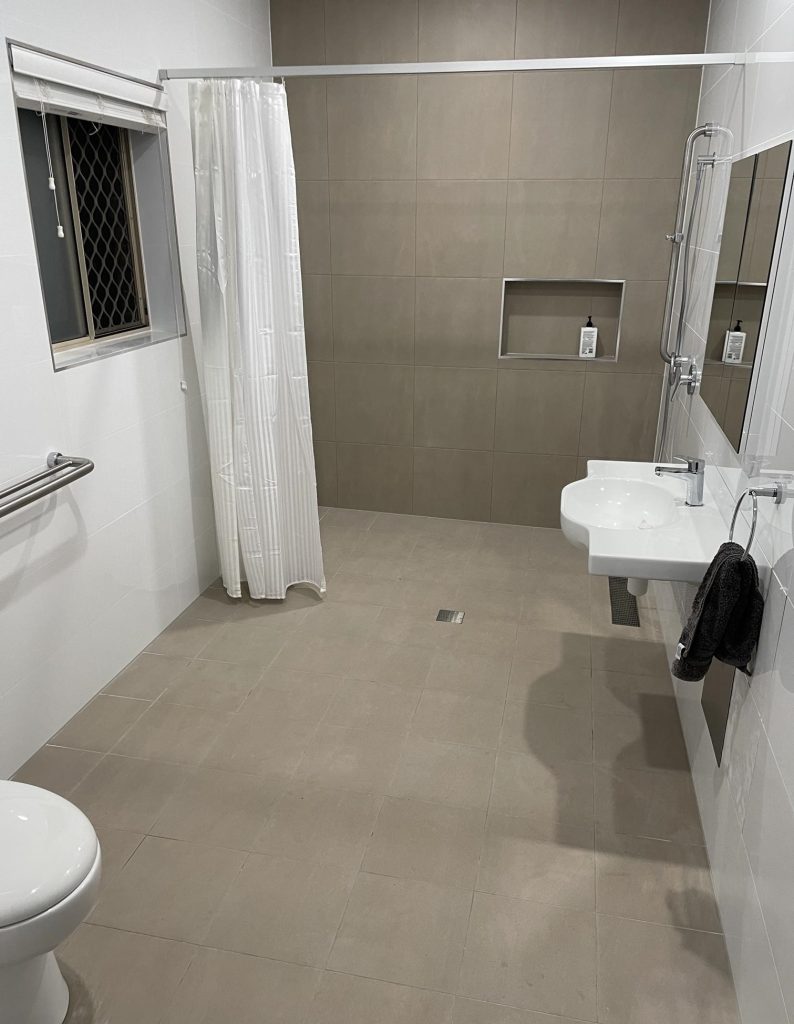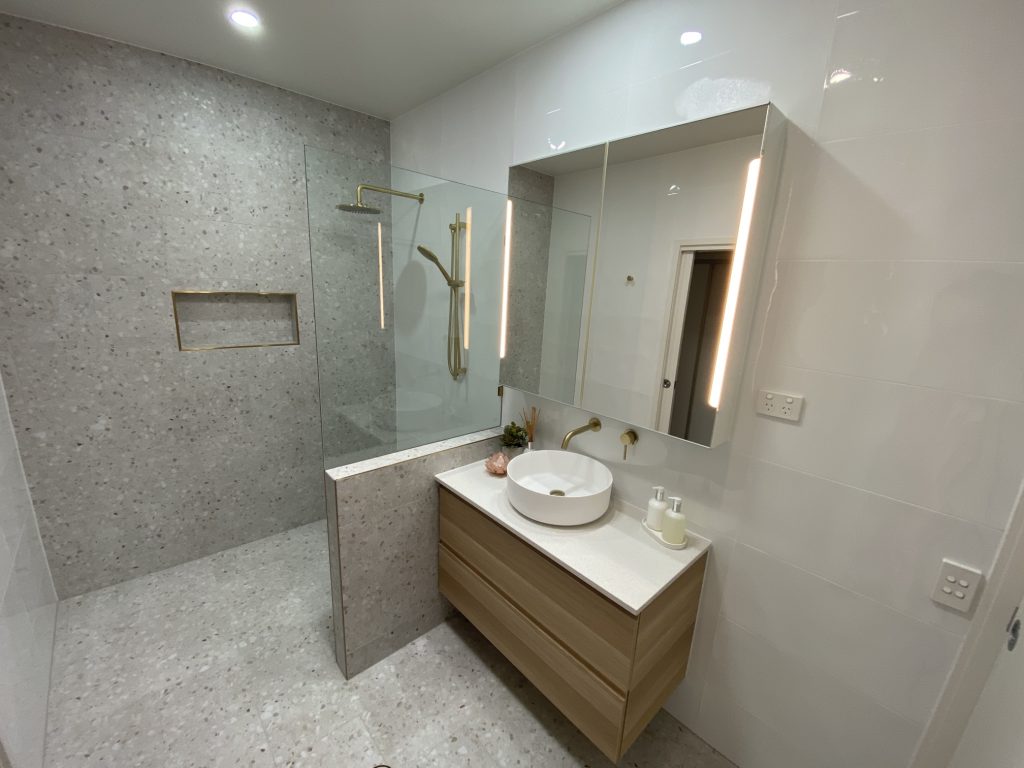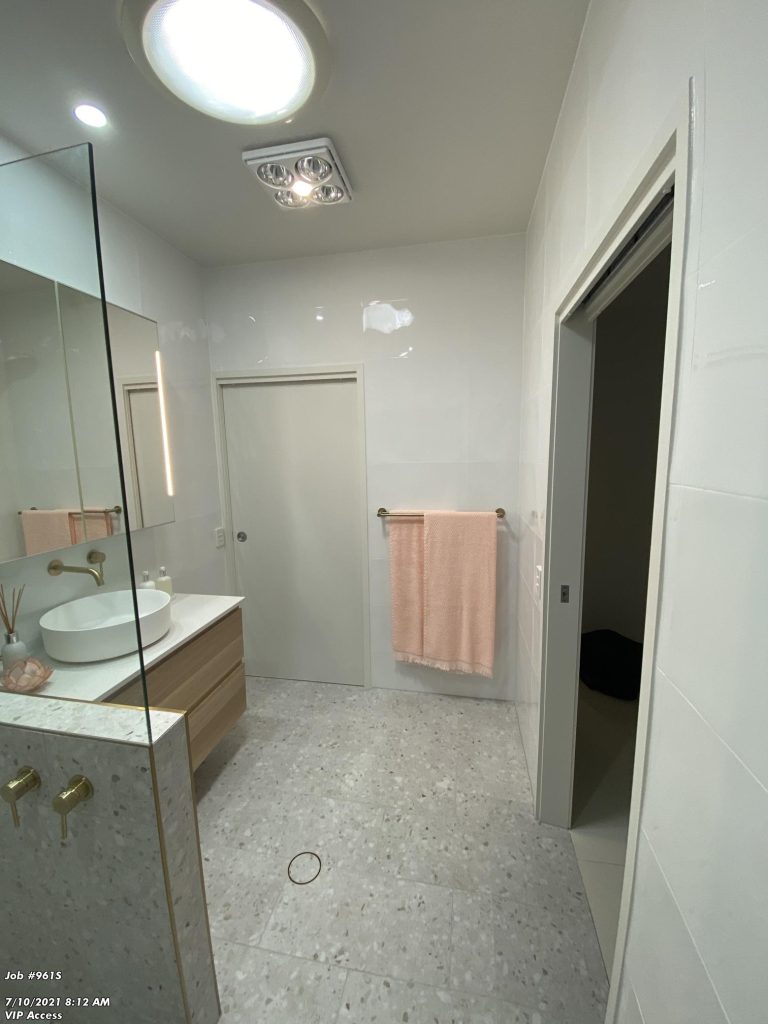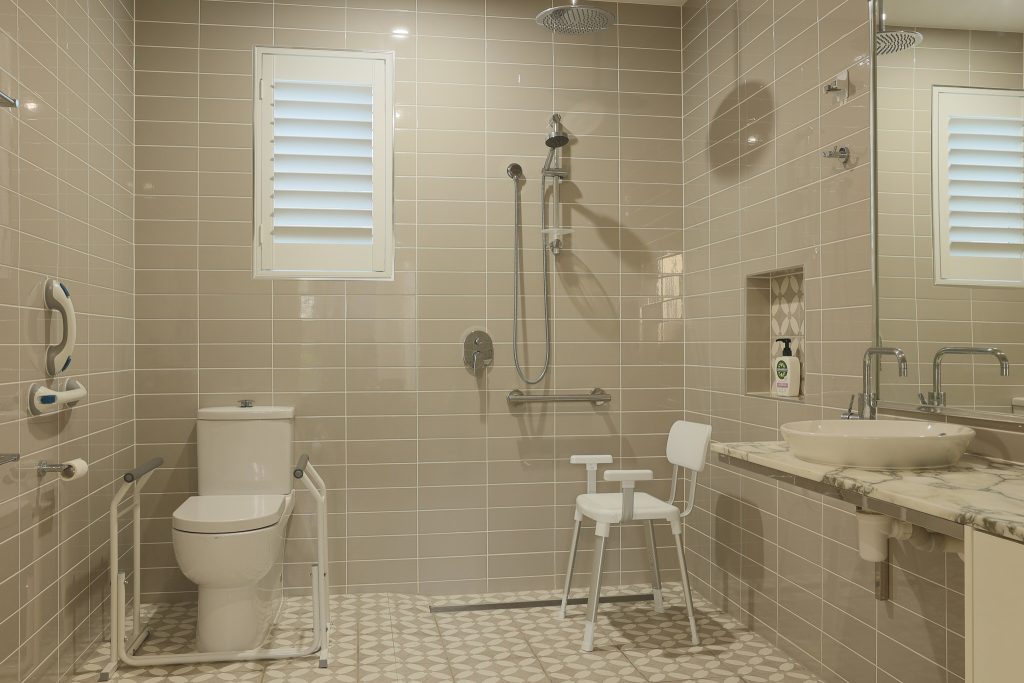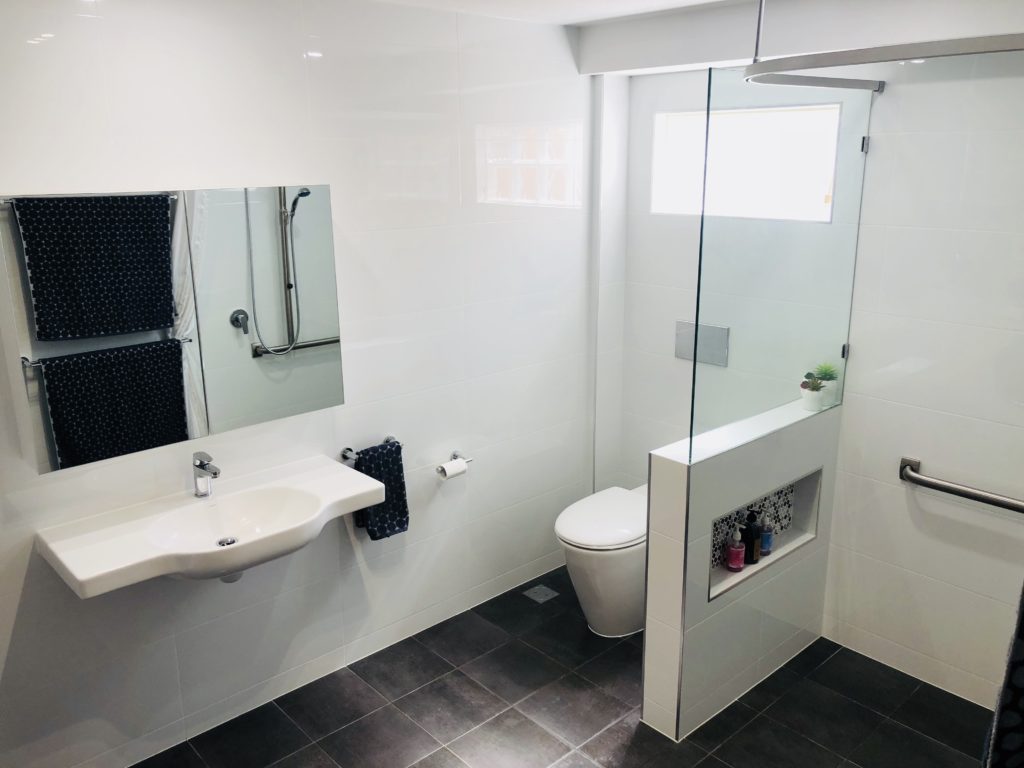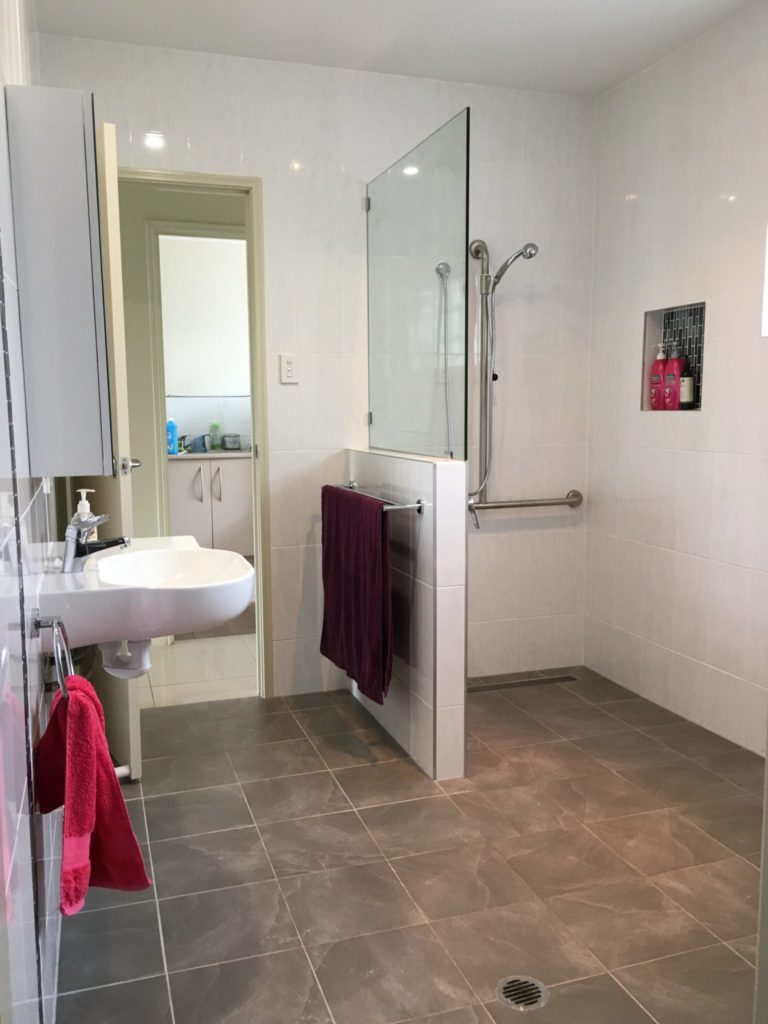DIFFERENCES BETWEEN A WET ROOM AND A TRADITIONAL BATHROOM
A wet room represents an open-plan bathroom with a shower area devoid of entry barriers. Typically featuring wall-mounted sinks and vanities, some may also incorporate freestanding tubs. Although some have partial walls to contain water, the overall design remains barrier-free.
These wet rooms are particularly beneficial for individuals with mobility challenges, providing a fully waterproof space without restrictions in the shower area. Accessible features like grab rails, shower seats, hand-held shower hose and user-friendly fixtures are commonly integrated.
Converting a traditional bathroom into a wet room demands substantial technical expertise and is not a simple DIY project. Skilled renovation teams are essential for such a transformation.
On the other hand, a conventional bathroom typically comprises a defined space with essential fixtures like toilets, sinks, vanities, showers, and/or bathtubs. While the walls and floors may be tiled, waterproofing is mainly restricted to the tub and shower areas.
Key Similarities and Differences:
Both wet rooms and traditional bathrooms house similar fixtures and can possess a similar aesthetic. Additionally, both add value to a home after modification and demand vigilant upkeep to prevent mildew or mould. Tubs are possible options for both.
However, specialised waterproof materials are indispensable for wet rooms, whereas traditional bathrooms utilise barriers to confine water to enclosed spaces. Wet rooms necessitate precise plumbing, tiling, and hygiene sealed grab rails to maintain their waterproofing, while traditional bathrooms don’t rely on these barriers.
Furthermore, wet rooms require non-slip surfaces throughout, and stringent regulations apply to electrical fixtures. In contrast, traditional bathrooms have measures like shower screens to prevent electrical issues.
The modification costs for a wet room are generally higher due to additional waterproofing and plumbing requirements, along with the need for additional skilled tradespeople.
Benefits of a Wet Room:
Wet rooms are not solely for individuals with mobility challenges. They’ve become a trendy design choice, offering a stylish, easy-to-maintain upgrade to a traditional bathroom.
Their enhanced accessibility makes them impressive, aiding those with mobility limitations, older individuals who struggle with low barriers, or those recovering from injuries. The removal of barriers facilitates independence, providing various modification options.
Many have experienced the life-changing impact of transforming a traditional bathroom into a wet room, enhancing safety and independence. Even for those without mobility issues, a wet room can elevate a home’s aesthetic and functionality.
For further information on wet room modifications and consultations, reaching out to VIP Access can provide valuable insights and guidance from our knowledgeable and friendly staff.
